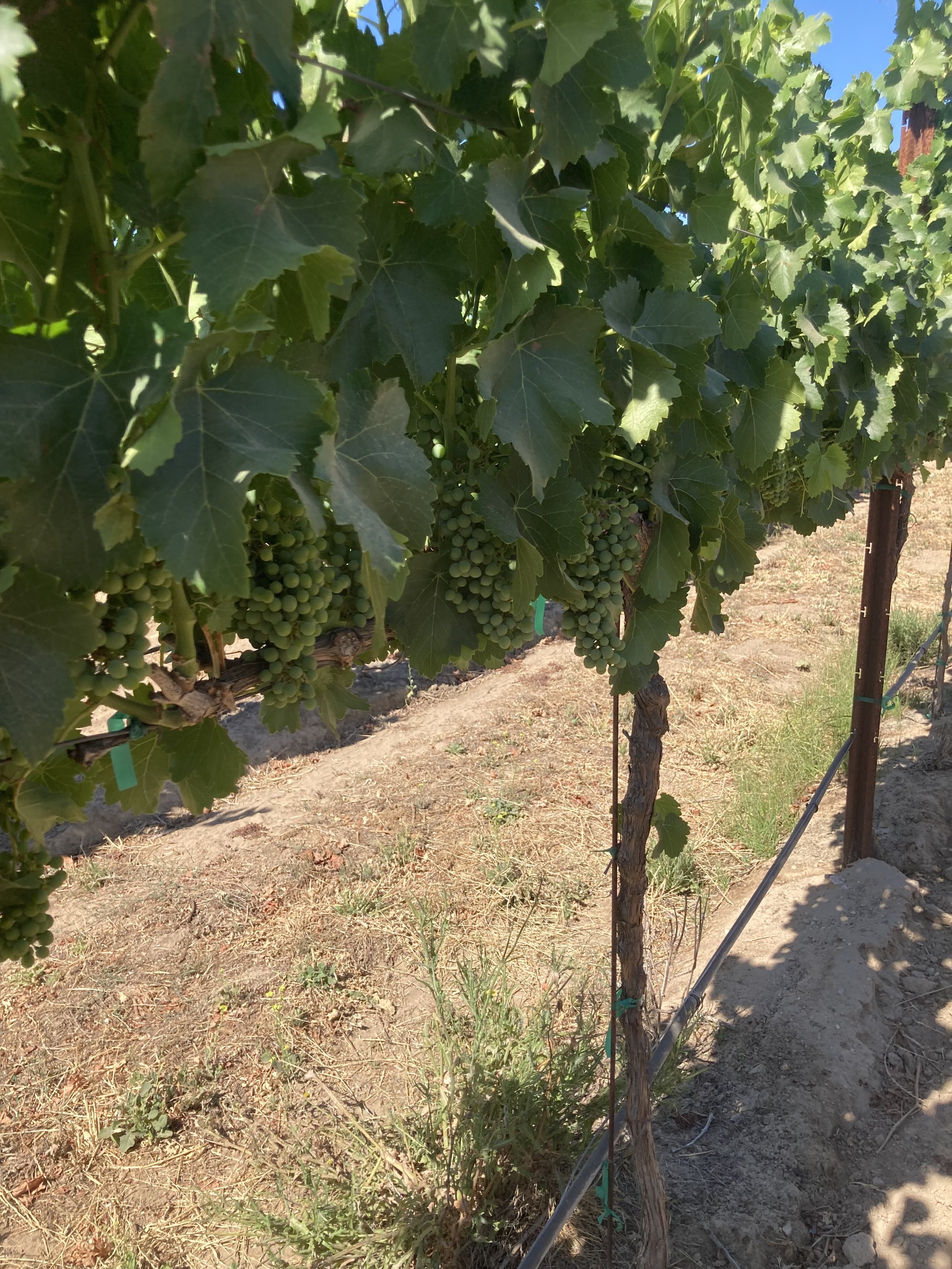Fruit Set
By Wine Club Manager, Jillian Oksen
Fruit is in the vineyard! As the seasons change the vineyard goes through its stages of life. We talk often about bud break, veraison, and harvest, but we don’t talk a lot about fruit set, which is a crucial stage in the vineyard. There is strategic planning that goes into fruit set before we even have bud break, which is done at pruning.
Most of our vines are spur pruned. On a vine you have the trunk that two arms grow from, called cordons. From the arms grow spurs, from spurs grow shoots. Finally, from the shoots grape clusters are grown. In the process of pruning, we want four inches between each spur, which comes out to about seven spurs per cordon. Off the shoots we want two clusters per shoot. While the vine can grow more than this, we want quality grape clusters. Pruning in this manner lets us control the number of clusters we produce, leading to the overall quality of our wines.
When thinking about the quality of our grapes, we start with the nutrients from the soil that travels up the trunk to the arms, to the shoots and into the grape clusters. If we did not prune, left to the vines own devices it would produce a large number of shoots and clusters, this would over stress the plant and stop the clusters from receiving all the nutrients they need. By shoot thinning we limit the clusters helping the vine nurture a smaller number of clusters, not over stressing the vine.
Another concern is how the shoots will grow. We want them to grow upwards and about four inches apart. Growing upward shoots helps us control the canopy, which shades the clusters to avoid sunburn. Having the shoots about four inches apart helps with airflow for the grapes. Airflow is important so that we don’t get mildew. Basically, we want to be able to see through the canopy.
Anthony and I ventured out into the vineyard just the other day to look at the fruit set in Block 4 where our Tannat grows. The clusters are developing quite nicely. Tannat is typically a darker tannic wine, which typically produces smaller berries. From the pictures here you can see that the grapes are coming along nicely. They will typically double in size. Due to the recent hot spell, Anthony anticipates veraison to start mid-July, another exciting time in the vineyard.
I hope this was informative, I know I enjoyed learning about fruit set from Anthony. Anytime I get a chance to ask Anthony about the vineyard I find myself learning something I never knew. I encourage you to ask Anthony questions on your next visit to the winery. Remember the Le Vigne team puts a lot of thought, love, and care into the wine we produce from vine to bottle.




